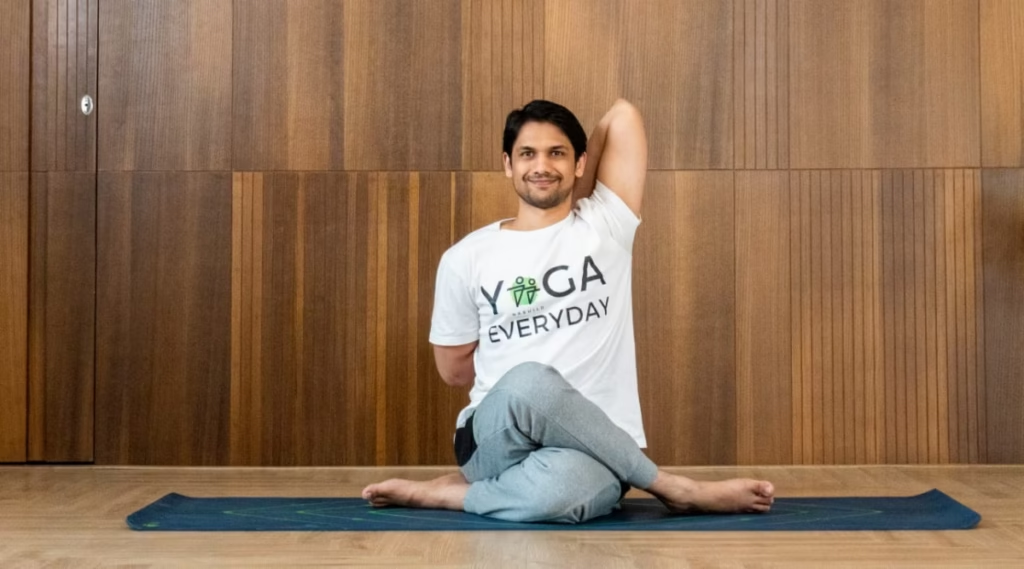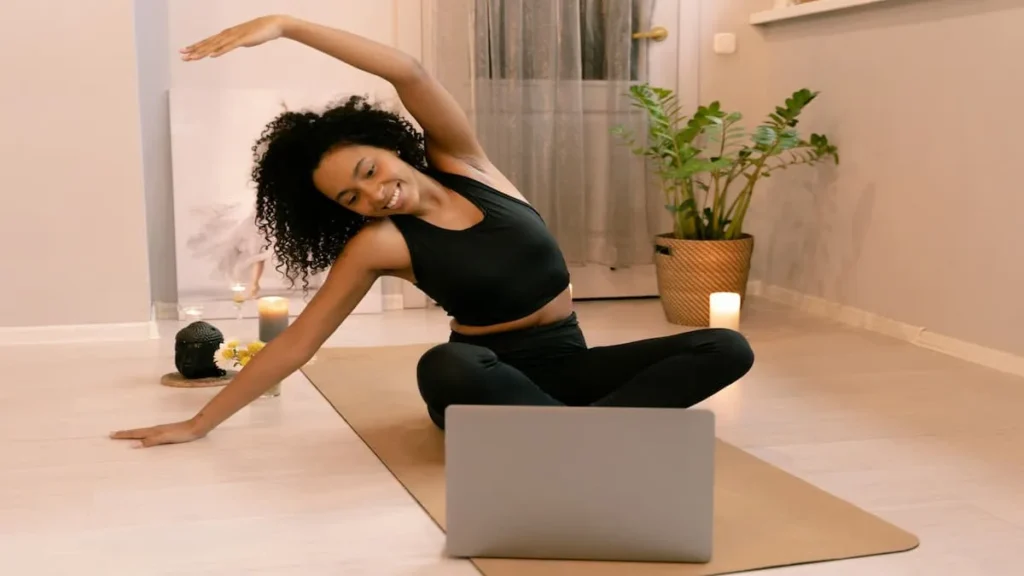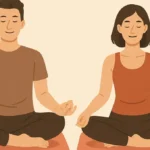
Yoga is more than exercise. It is a practice for body and mind. In India, yoga has deep roots. Now apps and online classes are everywhere. Many Indians wonder: can virtual yoga replace a real teacher?
1. Why Virtual Yoga Has Grown
During the COVID‑19 pandemic, yoga studios closed. People turned online. Apps, YouTube, Zoom became popular. Even now, many continue with virtual yoga. It is easy and fits modern life.
Online classes cost less. Some are free. Some apps charge a small monthly fee. There is no travel. You can practice at home or while traveling .
You can pause and repeat videos. You can pick times that suit your day. You can try many styles. From Hatha, Vinyasa to Restorative yoga.
2. What In-Person Yoga Offers
In a real class, the teacher watches your posture. They can correct you. They can give adjustments. This reduces risk of injury. Especially for beginners. It also builds confidence .
In-person classes bring community. You meet other learners. You share energy. This helps motivation and focus.
Also, a studio is calm, dedicated space. There are no distractions. You feel more focused and mindful.
3. Evidence from Research
A study in Journal of Alternative and Complementary Medicine compared online vs in‑person yoga. It found:
- In‑person yoga scored higher in mood, focus, physical satisfaction, and feeling energized.
- Online yoga scored higher in convenience and affordability.
So both formats offer benefits. But in‑person gives a richer experience in emotional and physical terms.

Read more: Yoga After a Sleepless Night: Reboot Your Energy Naturally
4. What Practitioners Say Online
On Reddit and forums:
- One user shared that after 18 months of home practice, she joined a studio. She saw much progress in just one month. She could do postures like malasana and half splits thanks to teacher guidance and energy in the studio.
- Another yoga teacher said she took both online and in‑person training. She found the online program more structured. It had better lessons, videos and learning materials. She told that in‑person felt scattered, storytelling heavy, and less structured overall.
- Many people do both. One user said: “Online is great for convenience… Biggest negative… is that you don’t have an in person instructor to help, advise, etc. For me a mix of both is ideal”.
5. Pros & Cons
Online Yoga Apps
Pros:
- Very affordable, often free or low‑cost subscriptions.
- Practice anytime, anywhere — home, office, hotel .
- Wide range of classes and teachers from India and abroad.
- Good for privacy and comfort at home.
Cons:
- No one can correct your posture in real time.
- Requires self‑discipline. Easy to skip classes.
- Home distractions: family, phone, TV.
- If internet is poor, technical issues can break your flow .
In‑Person Yoga Classes
Pros:
- Real‑time guidance and personal adjustments.
- Sense of community and shared energy.
- Structured schedule helps practice regularly.
- Greater mental and physical satisfaction.
Cons:
- Classes are costlier. You pay studio fees and travel expenses.
- Fixed schedules may not suit busy life in Indian cities.
- Travel time and traffic can be tiring.
- Not all studios offer variety; some cities have limited styles.
6. What Is Best for Indians?
In India, traditional yoga studios are abundant in cities. Rishikesh, Pune, Bangalore, Delhi, Mumbai all have many options. A teacher can explain in Hindi or English. They know Indian culture and body types.
But Indians also travel a lot. On business trips, on leave, or on lockdown, they need flexibility. Online apps help then. You can join a live Zoom class or play a prerecorded session on your phone.
For many urban Indians, a hybrid model works well. Start with an in-person course, learn proper alignment. Then follow apps or recorded lessons to continue at home. Some online platforms also offer live feedback or small-group Zoom classes .
7. How Virtual Can Be Stronger
Online teacher training may be improving. Some users say online training is more organized. It offers better content and allows replaying lessons. You can revisit anatomy or pose tutorials.
Hybrid formats blend online and in-person. You study theory online and attend physical workshops for practice and corrections .
8. Safety and Injury Risk
Doing difficult poses alone can be risky. Without proper help, you may strain muscles or joints. If you feel pain, try easier versions. Use props like blocks and belts. Do not push into pain.
9. Tips for Indian Yogis
- Beginners: Try in-person classes for 4–8 sessions. Learn basics from a teacher. Ask questions.
- After that: Use apps like Yoga with Adriene, DoYogaWithMe, Indian teacher platforms. Mix live class and recorded sessions.
- Choose style: For calm mind and breath, try Hatha, Yin or Restorative. For strength, try Vinyasa or Power yoga.
- Keep time: Use calendar reminders. Set up a quiet corner in your home.
- Community online: Join forums or app groups so you feel connected.
- Seek feedback: Some apps allow you to post video and get teacher suggestions.
10. Can Virtual Yoga Replace a Teacher?
Conclusion: Virtual yoga cannot fully replace a live teacher. But it can be a powerful tool. Especially if used wisely. It brings convenience, affordability, variety. It suits modern Indian life. Yet, real teachers give you safety, alignment, motivation and community.
So the best path is often both together. Learn from a teacher first. Build confidence, correct alignment. Then carry on online. Use apps to stay consistent. Use studio classes now and then. Mix the strengths of both modes.
In the end, yoga is personal. Choose what works for you. Your mind and body will thank you.
Author: Sonam










